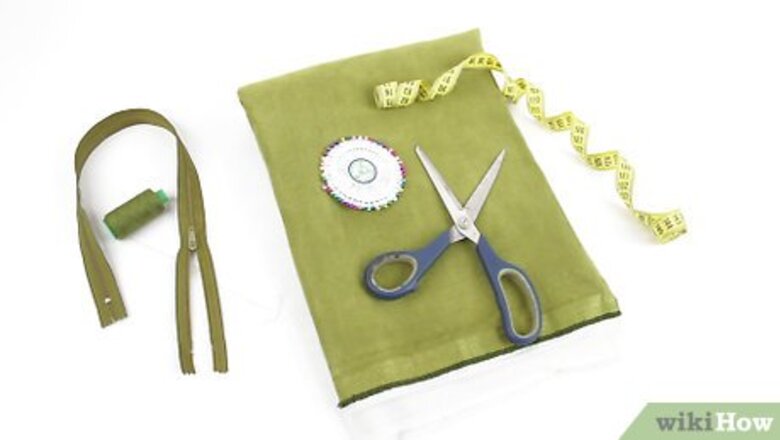
views
Choosing Materials and Cutting the Fabric
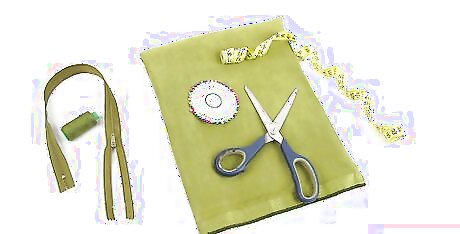
Select fabric in the color and style of your choice. You can use any kind of fabric you like, but a medium-weight fabric in a smooth texture is the easiest to work with. Select fabric in a print or color that appeals to you. For example, you could choose a cotton or cotton-linen blend to make your pillow cover.Tip: If you are using a machine washable fabric, wash and dry it before you begin sewing. This will prevent it from puckering or changing shape when you wash it in the future.
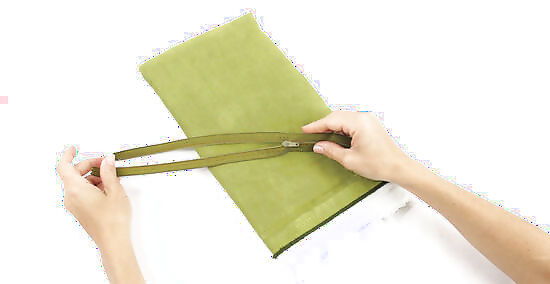
Choose a zipper 4 in (10 cm) shorter than the length of your pillow. This is the ideal length for creating a zippered opening on a pillow cover. Opt for a zipper that matches or complements the color of the fabric you are using as well, such as a light blue zipper with light blue fabric. For example, if the pillow you are making will be 14 in (36 cm) long on the side that you want to add a zipper onto, then chose a zipper that is 10 in (25 cm) long.

Select a pillow form in the desired dimensions. You can purchase a pillow form in a craft supply store or use a pillow that you already have. Choose a pillow in the shape, size, and thickness that you want your pillow cover to be. For example, if you want to create a square-shaped pillow that is 16 by 16 in (41 by 41 cm), then you will need to a pillow form in these dimensions. Tip: Opt for a square or rectangular-shaped pillow if this your first pillow. These shapes are easier to work with than circular pillows.
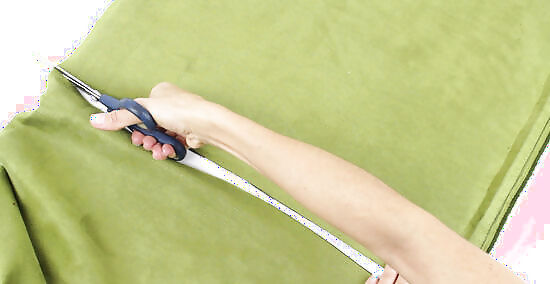
Cut 2 pieces of fabric 1 in (2.5 cm) smaller than your pillow form. Measure the width and length of your pillow form and subtract 1 in (2.5 cm) from each measurement. Then, cut your fabric into 2 equal-sized pieces using these measurements. Cutting the fabric slightly smaller than the pillow form will help to ensure that the pillow looks plump in the pillow cover. For example, if your pillow form measures 16 by 16 in (41 by 41 cm), then cut your fabric so that it is 15 by 15 in (38 by 38 cm).
Attaching the Zipper

Stack the 2 pieces of fabric with the right (outer) sides facing each other. Take the 2 pieces of fabric that you cut out and place 1 on top of the other. Lay the first piece with the right side facing up and the second piece with the right side facing down. Make sure that the edges are even on all sides of the 2 pieces. If desired, you can insert a few pins to help keep the 2 pieces together. However, this may only be necessary if the fabric is slippery.
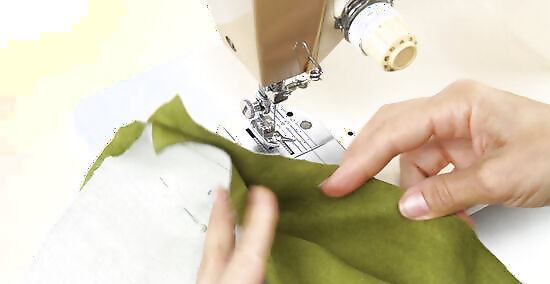
Sew a straight stitch 2 in (5.1 cm) from each corner on 1 edge. Take the 2 pieces to your sewing machine and set it to the straight stitch setting. Then, sew a straight stitch 2 in (5.1 cm) from 1 corner and repeat on the opposite end of the same edge. Only do this for 1 edge of the pillow and leave the other sides open for now. This will create the opening for your zipper.
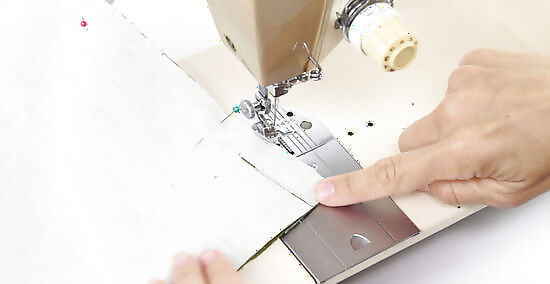
Backstitch by about 0.5 inches (1.3 cm) at the beginning and end. To backstitch, press down on the lever on the side of your sewing machine. This will reverse the direction of the stitching so that you can sew backwards. When you reach the beginning of the seam, release the lever and continue sewing forward until you reach the 2 in (5.1 cm) mark. Then, backstitch again to finish the stitch. Repeat this on both ends of the seam.
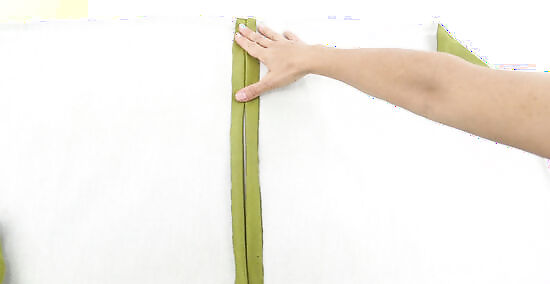
Fold the fabric back along the opening and stitch it down. After you finish sewing the other end of the pillow edge, open up the fabric with the raw edges of the fabric you just sewed facing up. Then, press down the fabric along the edges of the opening so that the raw edges will be hidden inside of the pillow cover. Sew a straight stich about 0.25 in (0.64 cm) from the raw edges of the fabric along the opening.Tip: If desired, you may also iron the seam open before you sew. This will help to give your pillow cover a crisp look.
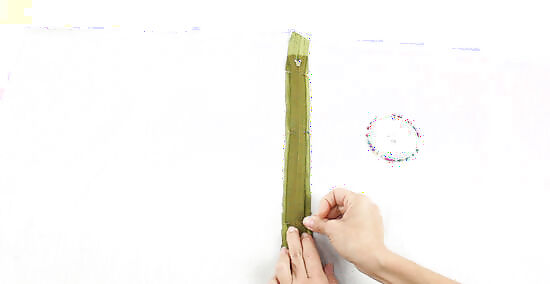
Place the zipper onto the seam facing down. Next, lay out the fabric with the wrong (inner) sides facing up and place the zipper face down over the opening. Line up the edges of the zipper with the opening so that the zipper pull is right at the top of the opening. Insert a pin at the top and bottom edges of the zipper to hold it in place over the pillow cover opening.
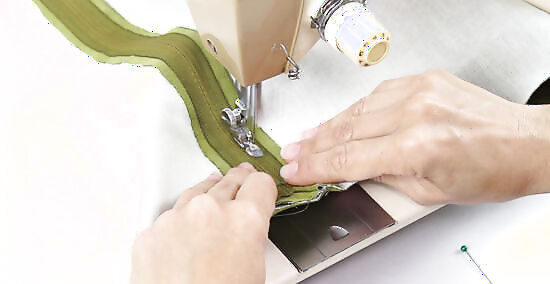
Sew a straight stitch along the edges of the zipper and pillow cover. Take the pillow fabric to your sewing machine again and sew along the edge of the zipper to attach it to the pillow cover fabric. Keep the stitches about 0.25 in (0.64 cm) or less from the zipper. Be careful not to sew over any pins or you may damage your sewing machine. Cut the excess threads after you finish sewing the zipper in place.
Finishing the Pillow

Sew a straight stitch around the remaining edges. Layer the 2 pieces so the right sides are facing inwards and line up the edges. Then, sew a straight stitch 0.5 in (1.3 cm) from the edges of the fabric going all the way around the remaining open sides of the cover material. Warning: Do not sew around the zippered edge again or you won’t be able to open your pillow cover!
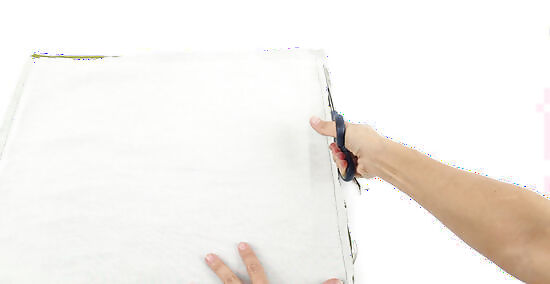
Cut the excess fabric at the corners of the pillow cover. After you finish sewing the other sides of the cover, use a pair of pinking shears or regular scissors to cut off about 0.25 in (0.64 cm) of excess fabric at each of the corners. This will help to reduce the bulk on the corners of the pillow after you invert it. Be careful not to cut through the stitches at the corners of the pillowcase.
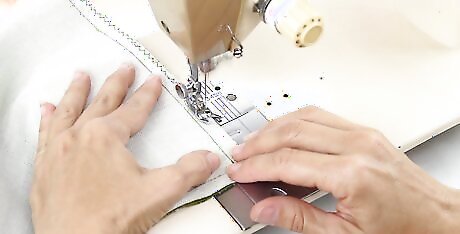
Sew a zigzag stitch around the outside of the pillow seam. Next, prevent the edges of the pillow cover from fraying by sewing a zigzag stitch all the way around the non-zippered edges of the pillow cover. Sew the zigzag stitch so that it comes to the raw edges of the fabric. You may need to adjust your zigzag stitch settings to ensure that the stitch will not be too wide.
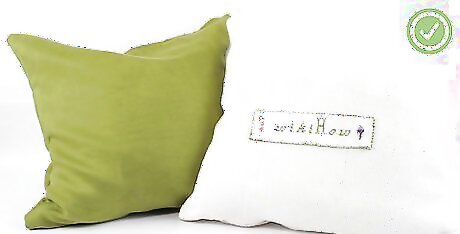
Invert the pillow cover and put the pillow insert into it. After you have finished securing the edges of the cover with a zigzag stitch, invert the pillow cover. Then, insert the pillow form into your cover and zip it up. Your zippered pillow cover is complete!




















Comments
0 comment